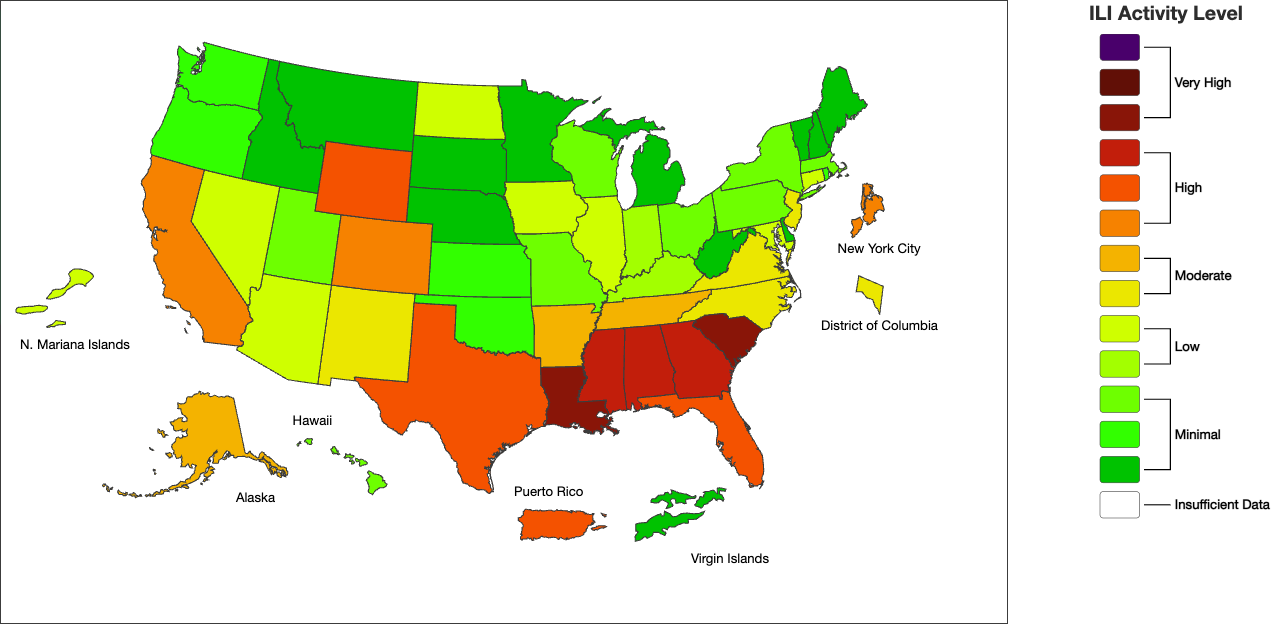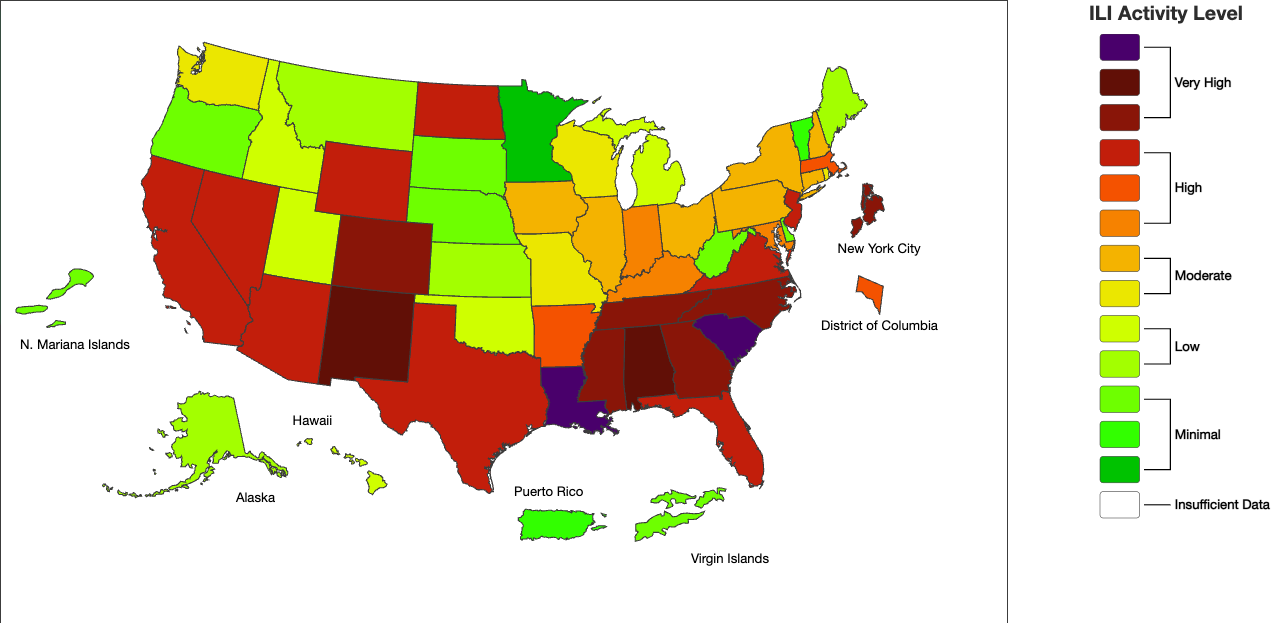Everyone you know sick? 9 states reach CDC’s highest level for respiratory illness
(NEXSTAR) – If you’ve been coughing, feverish, phlegmy or otherwise sick, you are far from alone. A trio of respiratory illnesses are spreading widely, sickening families around the country with the flu, RSV and COVID.
Tracking by the Centers for Disease Control and Prevention shows a substantial jump in people going to the doctor reporting symptoms of respiratory illnesses. There was also a 13% increase of people testing positive for influenza in a single week.
The CDC estimates that so far this season there have been 5.3 million people sickened, 54,000 people hospitalized, and 3,200 deaths from the flu – and those numbers are still rising.
By the end of last week, on Dec. 16, nine states had reached the “very high” flu activity category, the CDC’s highest level.
One month ago, only two states were classified as “very high.” In the latest data released Friday, Alabama, Colorado, Georgia, Louisiana, Mississippi, New Mexico, North Carolina, South Carolina, Tennessee were in that category. New York City, which reports health data separately from the rest of the state, was also “very high.”
Another 14 states and Washington, D.C., weren’t far behind, still categorized as “high” illness activity.
See how bad things have gotten in your state over the last month using the maps below. Sliding the cursor back and forth compares the situation on Nov. 18 (left) with the most recent data from Dec. 16.
The darker the shade of red, the higher the level of respiratory illness. Two states (Louisiana and South Carolina) are shown in purple, the very top tier.


The CDC determines each state’s level of flu activity by comparing the current data from health care providers to what’s normal for that area outside of flu season.
The data is based on the number of people reporting to a health care facility with flu symptoms – fever, plus a cough or sore throat. It is not based on lab-confirmed influenza cases.
That means it could be including cases that turn out to be other respiratory illnesses, like COVID or RSV, but it also could be missing cases where people are staying home and fighting the sickness on their own.
The three major viral illnesses listed above – COVID, RSV and influenza – have lots of overlapping symptoms, which can make it hard to know what you have without a test. (We compare the symptoms here to help you narrow it down.)
Copyright 2024 Nexstar Media Inc. All rights reserved. This material may not be published, broadcast, rewritten, or redistributed..













